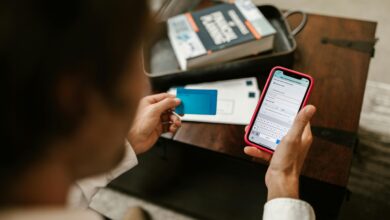How to Protect Your Personal Information Online: A Comprehensive Guide

In today’s digital age, protecting your personal information online is more important than ever. With cybercriminals constantly devising new ways to steal sensitive data—such as passwords, credit card numbers, and Social Security details—it’s crucial to adopt proactive measures to safeguard your privacy. Whether you’re shopping online, using social media, or simply browsing the web, taking steps to protect your personal information can help prevent identity theft, financial fraud, and other cyber threats.
This article provides a detailed guide on how to protect your personal information online, covering essential practices, tools, and strategies to keep your data secure.
1. Use Strong, Unique Passwords
Why It Matters
Weak or reused passwords are one of the most common vulnerabilities exploited by hackers. If a single account is compromised, using the same password across multiple platforms can lead to widespread breaches.
Best Practices
- Create Complex Passwords: Use a mix of uppercase and lowercase letters, numbers, and special characters.
- Avoid Predictable Patterns: Stay away from easily guessed passwords like “123456” or “password.”
- Use a Password Manager: Tools like LastPass, Dashlane, or 1Password securely store and generate strong passwords for all your accounts.
- Enable Two-Factor Authentication (2FA): Add an extra layer of security by requiring a second form of verification (e.g., a text message code or authentication app) to access your accounts.
2. Be Cautious with Public Wi-Fi
The Risks
Public Wi-Fi networks, such as those in coffee shops, airports, or hotels, are often unsecured. Hackers can intercept your data or launch attacks to steal personal information.
How to Stay Safe
- Use a Virtual Private Network (VPN): A VPN encrypts your internet connection, making it difficult for hackers to spy on your activity. Popular options include NordVPN, ExpressVPN, and Surfshark.
- Avoid Sensitive Transactions: Refrain from logging into banking apps, shopping sites, or entering credit card details while connected to public Wi-Fi.
- Turn Off Auto-Connect: Disable automatic connections to open Wi-Fi networks to prevent accidental exposure.
3. Limit Sharing on Social Media
The Dangers of Oversharing
Posting too much personal information on social media can make you vulnerable to identity theft, phishing scams, and targeted attacks.
Tips for Safer Social Media Use
- Adjust Privacy Settings: Restrict who can see your posts and profile information. Most platforms allow you to customize privacy settings.
- Think Before You Post: Avoid sharing sensitive details like your full address, phone number, birthdate, or vacation plans.
- Be Skeptical of Friend Requests: Only accept requests from people you know personally. Scammers often create fake profiles to gain access to your information.
- Disable Location Tagging: Turn off geotagging features that reveal your real-time location.
4. Secure Your Devices
Why Device Security Is Critical
Your devices—smartphones, laptops, tablets—are gateways to your personal information. If they’re not properly secured, they can become easy targets for cybercriminals.
Steps to Enhance Security
- Install Antivirus Software: Use reputable antivirus programs like Norton, McAfee, or Bitdefender to detect and block malware.
- Keep Software Updated: Regularly update your operating system, apps, and antivirus software to patch vulnerabilities.
- Enable Device Encryption: Encrypt your device’s storage to protect data in case it’s lost or stolen.
- Use Biometric Authentication: Features like fingerprint scanning or facial recognition add an extra layer of security.
5. Beware of Phishing Scams
What Is Phishing?
Phishing involves tricking individuals into revealing personal information through deceptive emails, texts, or websites that appear legitimate.
How to Spot and Avoid Phishing
- Check the Sender’s Email Address: Look for misspellings or suspicious domains.
- Don’t Click Suspicious Links: Hover over links to preview their destination before clicking.
- Verify Requests for Information: Contact companies directly using official contact information if you receive unexpected requests for personal data.
- Report Phishing Attempts: Forward phishing emails to your email provider or report them to authorities like the Federal Trade Commission (FTC).
6. Monitor Your Financial Accounts
Why It’s Important
Cybercriminals often target financial accounts to steal money or commit fraud. Regular monitoring helps you detect unauthorized transactions early.
Best Practices
- Set Up Alerts: Enable notifications for account logins, large transactions, or unusual activity.
- Review Statements Monthly: Check bank and credit card statements for unfamiliar charges.
- Freeze Your Credit: Place a credit freeze with major credit bureaus (Equifax, Experian, TransUnion) to prevent unauthorized credit inquiries.
- Use Fraud Protection Services: Many banks and credit card companies offer free fraud protection and monitoring services.
7. Safeguard Your Email Account
Why Email Security Is Crucial
Your email account is often the gateway to other accounts, as it’s used for password resets and account recovery.
How to Protect Your Email
- Use a Strong Password: Ensure your email password is unique and complex.
- Enable 2FA: Add an extra layer of security to your email account.
- Be Wary of Suspicious Emails: Avoid opening attachments or clicking links from unknown senders.
- Log Out After Use: Always sign out of shared or public computers.
8. Practice Safe Online Shopping
Risks of Online Shopping
Fraudulent websites and insecure payment methods can expose your financial information to hackers.
Tips for Safe Shopping
- Shop on Trusted Websites: Stick to well-known retailers and check for “https://” in the URL, which indicates a secure connection.
- Use Secure Payment Methods: Opt for credit cards or digital wallets like PayPal, which offer better fraud protection than debit cards.
- Avoid Saving Payment Details: Don’t store your credit card information on shopping sites to reduce the risk of theft.
- Read Reviews: Research unfamiliar websites to ensure they’re legitimate.
9. Back Up Your Data Regularly
Why Backups Are Essential
Ransomware attacks and hardware failures can result in permanent data loss. Regular backups ensure you can recover your information if something goes wrong.
How to Back Up Safely
- Use Cloud Storage: Services like Google Drive, Dropbox, or iCloud provide secure, accessible backups.
- Store Locally: Use external hard drives or USB drives for offline backups.
- Automate Backups: Schedule automatic backups to avoid forgetting.
10. Educate Yourself and Stay Informed
Stay Ahead of Threats
Cybersecurity is an ever-evolving field. Staying informed about the latest threats and trends can help you adapt and stay protected.
Resources for Learning
- Follow cybersecurity blogs and news outlets like Krebs on Security, Wired, or TechCrunch.
- Attend webinars or workshops on digital safety.
- Subscribe to alerts from organizations like the FTC or Cybersecurity and Infrastructure Security Agency (CISA).



